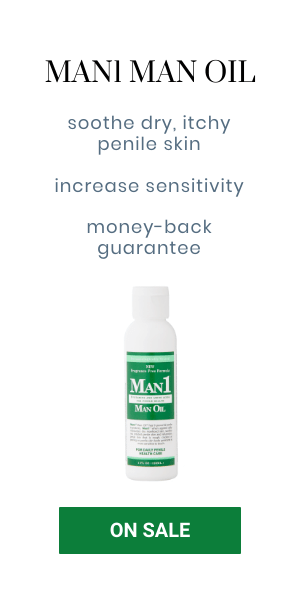Traditionally, the risk of sexually transmitted infections (STIs) has been more of a young man’s problem. Sometimes younger guys may not be as knowledgeable about STIs or about proper penis protection. At other times, when young bodies are full of raging hormones, a young guy may throw caution to the wind and engage in unprotected sex, even knowing the risks involved. But sexually related penis health issues are actually becoming an increasing problem among older men as well.
Some statistics
Although HIV (thankfully) continues to be on the decline, the rate for STIs in general has been rising among the general population in the United States and in many other countries. In 2017, the Centers for Disease Control and Prevention saw an increase of 200,000 in cases of 3 major STIs among the general population, a rise of almost 10 percent. But a second study found that the rise in common STIs among people 60 years of age or older hit an alarming 23 percent. (Data from the United Kingdom showed a similar increase, by the way.)
It’s not just the elderly that are affected; STIs are on the rise among middle-aged men, as well.
Exactly why this is occurring is unknown, but there are several guesses. One is that the availability of oral medications that can help a man overcome erectile dysfunction has led to increased sexual activity among middle-aged and older men. But many men who get “back in the saddle” after such a long time often have the attitude of “I haven’t used a condom in years. Why start now?” Or they may not be as up to date about the need for penis protection as some of their younger counterparts. And some men who continue to struggle with some erectile issues may eschew a condom, as it may add to the problem with maintaining an erection.
Penis protection is key
Whatever the reasons, middle-aged and older men need to be aware that penis protection is necessary no matter what the age. Guys who are getting back into the game should really consult with their doctors to find out about all the latest advances, including pre-exposure prophylaxis (PrEP) to help prevent HIV. Using condoms continue to be the best way to help prevent the spread of STIs, especially since PrEP is effective against HIV but not against other diseases.
But simply using condoms and being on PrEP isn’t where penis protection ends among sexually active older men. Learning to be open with their partners about their sexual health – and encouraging their partners to be equally open with them – is crucial. Talking about sexual health tends to be more difficult for older people; being sexually candid is much more acceptable among youth.
Equally important is for men to be sure they are tested regularly if they are in a non-monogamous relationship – even if it is only their partner who has other sexual partners. Most experts recommend testing every 3 months as a way to ensure early and proper identification of any STIs. The sooner an STI is diagnosed, the sooner effective treatment can begin.
Older men know that STI avoidance is only part of penis protection and that overall penis health must also be tended to. One way to help in this area is via the daily use of a superior penis health oil (health professionals recommend Man 1 Man Oil, which is clinically proven mild and safe for skin). It pays to select an oil that includes vitamin C among its ingredients. Vitamin C is a key component of collagen, a tissue in the body that gives skin its tone and elasticity. Vitamin C is also necessary for proper blood flow, which is essential for maintaining erectile function. The oil should also include L-arginine, an amino acid that works to provide nutrients and oxygen for healthy cell function.
